Abstract
Madiha Kotb's fifth grade teacher noted her "talent in math" and that, plus marking her 16th birthday with Niel Armstrong's moon walk, led to her decision to choose a career in engineering. She started the materials engineering program at the American University in Cairo, but with the unexpected passing of her father, she and her husband moved to Canada, and she completed her degree at Loyola in Montreal in 1976. After a couple of years in Nigeria, she returned to Canada to do a Masters Degree in Mechanical Engineering, and took a job with the Quebec Department of Labour to develop regulations and standards for boilers and pressure vessels. She became a member of the National Board of Boiler and Pressure Vessel Inspectors and related technical committees of the American Society of Mechanical Engineers (ASME). Eventually she became Chief Boiler Inspector for Quebec. She became Vice President of Conformity Assessment for ASME, then a member of the ASME Board of Governors, and, finally, served as the 132nd President of ASME. She was also aligned with nuclear power initiatives, seeing the construction, commissioning, and eventual decommissioning of the Gentilly 2 nuclear power plant. In retirement, she has worked as a consultant and written a chapter of the book "Daughters of the Nile, Egyptian Women Changing Their World", intended to inspire female students.
